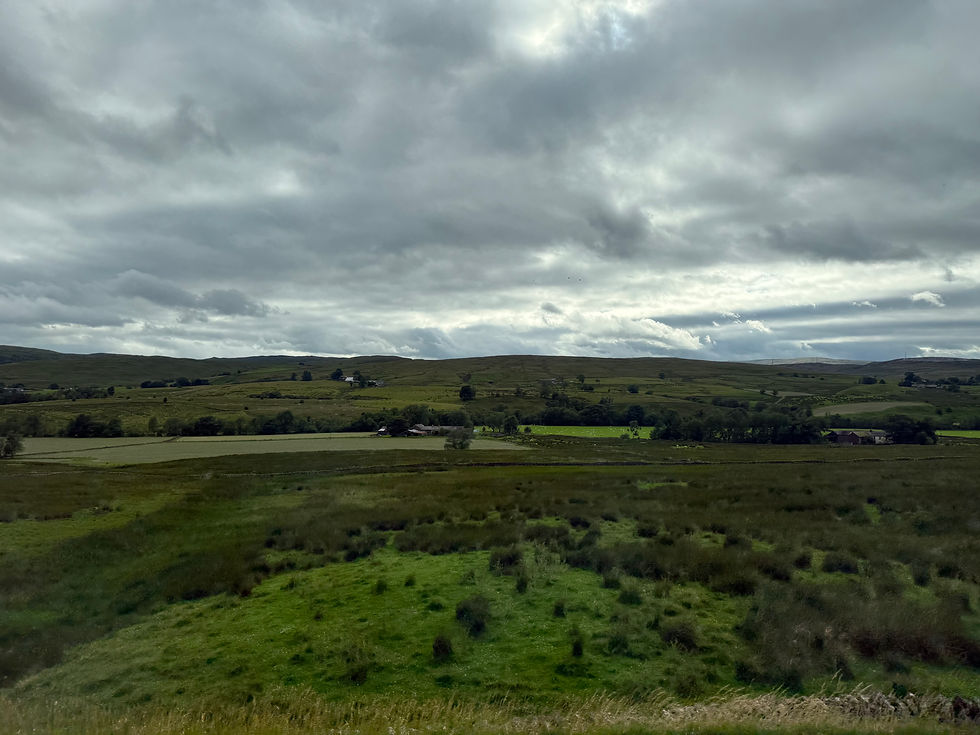Lovely Learning about Liverpool (#13)
- Sparkling Star

- Jul 14
- 3 min read
We had a long trip to Liverpool through Glasgow so we could have two direct trains with a long break for lunch in Glasgow.

On our way to Inverness a few days before, we identified a beautiful building with a Thai food restaurant near the train station we planned to have lunch at on our way to Liverppool.

We found the Chaophraya Glasgow at the Townhouse on Buchannan. We had our luggage and climbed up the stairs and asked the receptionist if we could eat at the restaurant and store our luggage. She placed our luggage up at the cloak closet and we climbed up rest the magnificent staircases to this magnificent room for our Thai lunch.




Apparently this building had once been a mens club and was formerly the Royal Scottish Academy of Music & Drama. The food was good too!

We arrived in Glasgow to see some remarkable buildings. Our hotel had a secret door to the train station and out the front we could see these buildings.



We walked down the gorgeous Liverpool streets to meet our 10am walking tour.

We waited for our tour near the Liverpool museum, and our tour guide had a family emergency and asked if we could meet at 1pm. We met another couple, Fiona & Eric, who were also on the tour. We became fast friends and spent the rest of the day touring the city together. Our first stop was the Museum of Liverpool. Laura was looking for the one exhibit on Ted's jewish heritage since his grandmother was born here, and in the 1830- early 1900's there was a very large Jewish population.

On our tour we learned from John from Global City Experience about the maritime historical component to the growth of Liverpool. In 1715, Thomas Steers designed the first wet dock enabling ships to load and unload regardless of the tide range.
Prior to having a wet dock, ships had to come in and load and unload in the 2 hrs when the tide was deep enough (overall 30ft tidal range). Good that took a week could be onloaded in a day. Ships would still come in and leave on a high tide.
For a full history read here.

Eventually, after creating over 60 wet docks, the decision is made to expand out the river for 7 miles to a depth that ships could easily dock.

In this picture are the first warehouses. In Liverpool, the first rail lines were created to move the cargo from the trains to their destination.

During WWII the Germans bombed the entire overhead railway. The trucking industry blocked rebuilding the rail line that looked much like the one in Chicago.

When the Liverpool docks were expanded, they had to create underground tunnels for horses then cars and trains to go under. When a second tunnel was built, they needed a ventilation tower. But to make it fit in with the architecture they put two office buildings on each side and decorated with the egyption with driving glasses and goggles that would have been contemporary in the 1920s.

This is an existing toll booth that would have been on either side for cars who wanted to use the tunnel.


On the top of these buildings are birds that are greeting

Building that was bombed during the blitz but kept the remnants of the old building.

Confederate headquarters in Liverpool.

We met our new friends Fiona & Eric after our wonderful tour and before our fabulous dinner.


The darker history to Liverpool is the prominent role it took in the transatlantic slave trade. Ships left Liverpool to go to Africa to then take the slaves to the United States and return with goods. Liverpool citizens did not see the brutality of the slave trade but over 70% of their wealth came from the profits of the slave trade.
Stay: 2 Nights
Pros: Best breakfast of the trip, fabulous location, great Tour, city with tons to see and experience
Cons: Not enough time
Rating: 5 star
Each city we visit has a different vibe: Deserted, Declining, Stable, Growing, Thriving
Liverpool: Growing




Comments